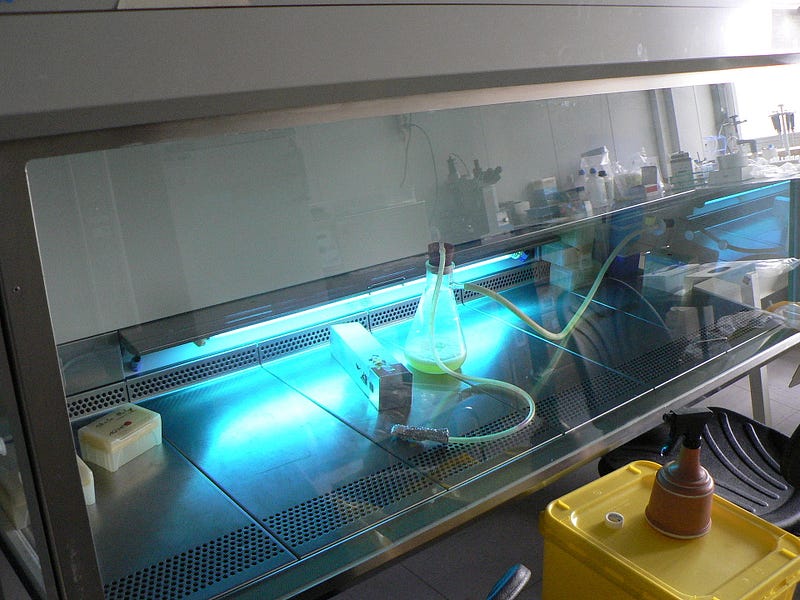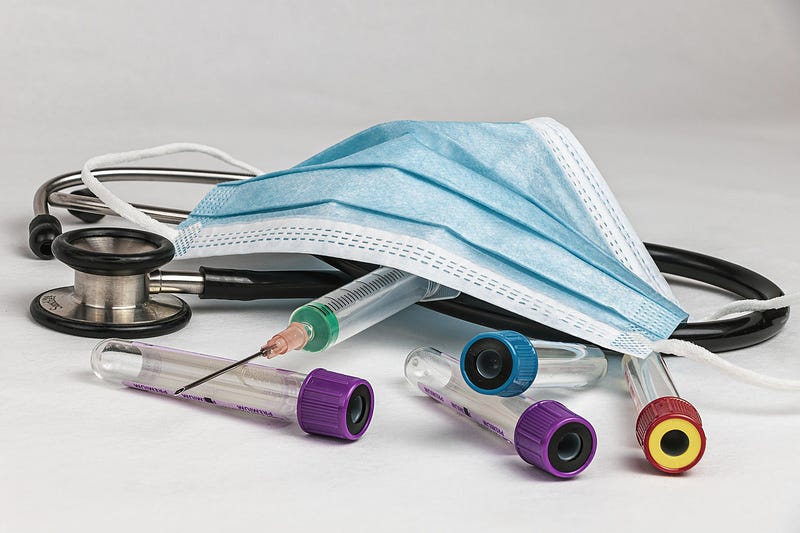Revolutionizing Pandemic Defense: The Promise of Far UVC Technology
Written on
Chapter 1: The Fragility of Humanity in the Face of Pandemics
In 2020, the world faced a stark realization about its vulnerabilities. Despite advancements in technology and medicine, the emergence of a simple Coronavirus turned life upside down, leading to millions of deaths and many others suffering from long-term health issues. As we navigate our current reality, the looming threat of future pandemics remains a significant concern. Factors such as increasing population density and climate change heighten the risk of new outbreaks. So, how can we bolster our defenses? Recent research has introduced a promising solution: a small device designed to eliminate pathogens from the air.
To comprehend the effectiveness of this device, it's crucial to understand how viruses like Covid-19 spread so effortlessly in today’s world. The indoor environments we favor often lack proper ventilation and natural light, creating ideal conditions for pathogens to persist for extended periods. When an infected person coughs indoors, the myriad of viruses they release can linger much longer than they would outdoors, significantly increasing the likelihood of transmission. Studies indicate that most Covid cases originated in indoor spaces, which is why the virus proliferated rapidly in homes, schools, offices, public transport, and even hospitals, albeit to a lesser extent due to safety measures.

Chapter 2: The Search for Effective Pathogen Control
What we need is an affordable and efficient means to eradicate pathogens without posing risks to human health. This proves to be a formidable challenge. While chemical sprays could be employed to sanitize indoor areas, they come with high costs and potential health risks, such as irritation or damage. Imagine spending an entire day in an office where disinfectants are constantly sprayed—it would be unbearable.
Another option is UV sterilization, which is both cost-effective and environmentally friendly. UV light disrupts DNA structures, swiftly neutralizing pathogens. Installing robust UV lights within buildings could therefore help keep harmful microbes at bay.

However, UV light is equally harmful to human cells. Sunburn, for example, is a result of UV damage, which raises the risk of skin cancer, especially for those with fair skin. Thus, relying on UV for constant indoor sterilization is not a practical solution; while it may offer a nice tan, it would ultimately lead to health issues for many.
Not all UV light is created equal. UVA and UVB rays have longer wavelengths and are primarily responsible for skin damage, while UVC rays, with their shorter wavelengths, pose less of a threat to human cells. A recent study aimed to leverage this distinction. Researchers utilized a 'far UVC' lightbulb, emitting wavelengths nearly as small as X-rays, and tested its effects on both pathogens and human skin. The results were astonishing: this type of light eliminated 98% of airborne pathogens without causing any harm to human skin!

The implications of these findings could be revolutionary. A low-cost device that effectively neutralizes airborne pathogens while ensuring human safety seems almost like a plot from a science fiction novel. Yet, it's a tangible possibility. We can envision a future where far UVC devices are installed in public transportation, schools, hospitals, offices, and even homes, ready to combat the next pandemic as it arises. Individuals might even carry personal far UVC devices for added protection.
When integrated with medical-grade masks, ventilation systems, and rapid-response mRNA vaccines, humanity could be far better equipped to face future pandemics.

Chapter 3: Future Prospects and Considerations
The first video, Preventing the next pandemic: New tools for global surveillance, explores the innovative strategies and technologies being developed for pandemic preparedness.
The second video, This is how we prevent the next pandemic, discusses practical measures and advancements that could help avert future outbreaks.
Can far UVC technology effectively halt the next pandemic? Only time will tell. While we've only begun to understand its application, further research is essential before widespread deployment. There may still be unknown side effects, but initial findings are encouraging.
Throughout history, humanity has faced numerous challenges, from natural disasters to wars and pandemics. Yet, we have continuously adapted and evolved. This resilience is what defines us as humans, leading to the development of a technologically advanced world. Innovations like far UVC technology could play a pivotal role in safeguarding lives in the future. Let’s hope it proves sufficient to combat the next wave of Covid.